31st October 2021
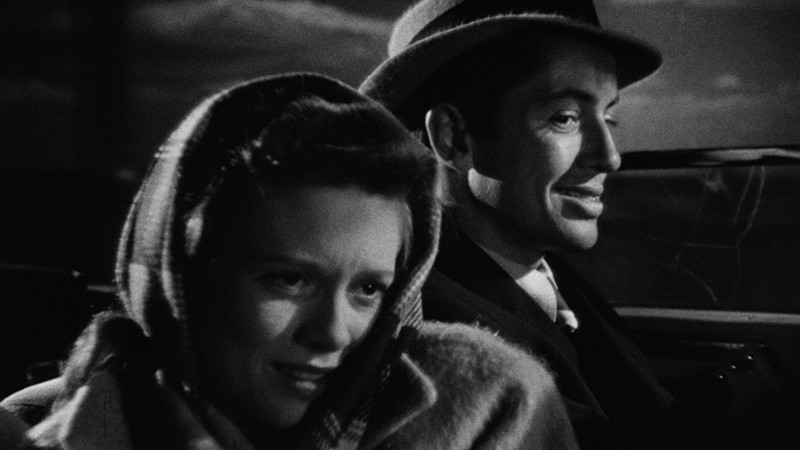
John Wyver writes: Let’s do this (once again).
• Multimedia lectures on film (Ep. 1) – They Live by Night (Nicholas Ray, 1948): this is a fascinating initiative by Cristina Álvarez López and Adrian Martin, a dynamic critical double act who have appeared in a number of previous Sunday lists (added to which, Adrian asked very nicely for a plug here); it’s a deeply smart extended (51 minutes) video essay about Ray’s noir thriller, pictured above, with Cathy O’Donnell and Farley Granger that you can rent for $8 or buy for $15. A great idea that I really hope finds a paying audience.
• Edgar Wright breaks down 25 films from the 1960s that inspired Last Night in Soho: I wish I could love Wright’s latest more but after a glorious first 45 minutes it descends into a standard zombie/slasher flick; but this is a terrific Indiewire feature with some familar titles and some deeply obscure ones.
• No connection: Leo Robson for NLR’s Sidecar offers a dense but really good read on Wes Anderson’s The French Dispatch, referencing (especially) the ideas of Frederic Jameson but also Pauline Kael, the Coens, late Godard and more.
• The Souvenir, Part II, reviewed – two movies for the price of one: The New Yorker’s film critic Richard Brody is among my favourite writers on cinema, and here’s on good form here writing about Joanna Hogg’s latest.
read more »
22nd October 2021

John Wyver writes: along with everything else, including a nasty cough with a slew of negative tests and a fall that left me with a wounded knee, I had been struggling for weeks, indeed months, to finish the draft of a long-overdue journal article. For some reason, I simply couldn’t finish it, and I would stare at my screen unable to tackle that but also unable to work towards anything else.
Which is at least part of the reason for Sunday links being on hiatus over the past months – for which I apologise. I have finally submitted a decent draft of the article, and so here we are, with a first autumnal selection of things that have interested me over the past weeks.
Of course there are a thousand things I could list, and this selection is fairly random – I’ll try to be a bit more structured in the coming weeks – and I’ll probably add to this list, as well as trying to do another this coming Sunday. But this might just get me back into the habit of posting here again. Thanks as always to those who I follow on Twitter for recommendations.
• Interview – You’ll be my mirror: Todd Haynes talks interestingly with Amy Taubin for Artforum about his new documentary The Velvet Underground, about which I have lots of thoughts, and which also might get me posting more extended reflections in the next few days.
• Where does James Bond go from here? [£ but limited free access]: this is among the best pieces I’ve read about No Time to Die (which I enjoyed enormously) – by Bilge Ebiri for Vulture.
• Britain’s temporary post-war studios: a fascinating piece by Richard Farmer at the Studiotec blog.
• The horror gem that kicks off Three Cases of Murder: Laura Kern for Criterion’s The Current on Wendy Toye’s contribution to the 1955 British anthology film.
• Neil Brand on Oscar Micheaux – an audience for Body and Soul: the estimable silent movie accompanist, broadcaster, film historian and more contributes a guest post to Silent London about the 1925 film that he is presenting at BFI Southbank on 31 October; Micheaux was the first Black American film director and the film features Paul Robeson.
read more »
4th July 2021

John Wyver writes: … and we’re back, if somewhat late in the day. I’ve finally submitted a draft of my article, and have only one further piece promised. Quite soon, really very soon, I can spend some more time with my books, and I can try to contribute bulging batches of links each week. In the meantime, here’s today’s selection of stuff that has interested me in the past few days (with some more to be added in a while), with my usual expression of gratitude for recommendations from those I follow on Twitter…
• Inside the Capitol riot – an exclusive video investigation: this really is remarkable – a 40-minute documentary from The New York Times forensically examining thousands of videos shot on 6 January; much of the material was shot by the rioters but there’s also police bodycam footage, lots of social media elements and more. It’s brilliantly compiled, and there are really interesting uses (above) of the visual language of split-screens (which is a current obsession of mine). An appropriate Independence Day watch.
read more »
24th June 2021

John Wyver writes: First broadcast just over a fortnight ago, Coventry Cathedral: Building for a New Britain has now taken its place on BBC iPlayer where (for licence fee payers in the UK) it will remain available for a year. The response to it has been wonderful, and I’m working towards a summary of some of that, with links, on the Coventry conversation page.
I also want here and in subsequent posts to return to discussing the archive material in the film and other aspects of our approach to the production. There’s so much that I’m keen to explicate and explore, but it’s going to take some time to work that through into posts here. If this seems of interest, I hope you’ll stick with us.
Let’s concentrate here on the film’s fifth chapter, ‘Adorning with Art’, and in particular on one of the main archive sources, An Act of Faith. This part is the most substantial section, and the one that editor Todd Macdonald, designer Ian Cross and I worked on first. It was quickly clear that we had such riches that the film overall needed a longer running time than the 60 minutes at which it was originally commissioned. In discussions with BBC commissioning editor Mark Bell we settled on a 75-minute duration, which is relatively rare for a television documentary, but which continues to feel like a pleasing length.
read more »
21st June 2021

John Wyver writes: we’re a day late this week, for which apologies. Nonetheless, here’s a selection of interesting stuff from the past week or so, with my usual thanks to those who recommended items.
• Janet Malcolm, remembered by writers: a beautiful, moving series of tributes from contributors to The New Yorker to one of the greatest of contemporary prose writers who died last week (above, from a portrait by Nina Subin), and…
• Janet Malcolm: to mark her passing The New Yorker has here made all of her articles for the magazine open access for a while – you could do worse than read every one.
read more »
13th June 2021
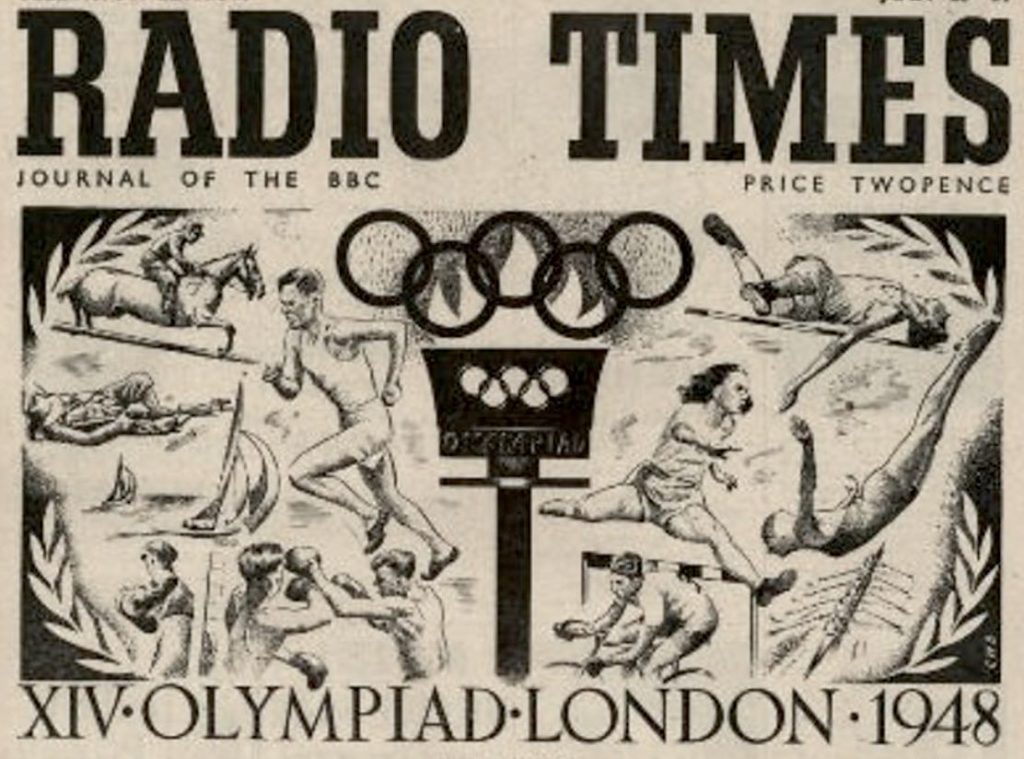
John Wyver writes: with Coventry Cathedral: Building for a New Britain out in the world and on BBC iPlayer, life is settling down (a bit) and I’m pleased once more to offer a selection of articles that he have engaged me over the past few days – and I’m going to add to a few more as the day goes on…
• International football at the 1948 Olympics: terrific BBC Genome blog post by Paul Hayes about live coverage of international football during the tournament just two years after the television service returned after the war; illustrated with the front cover of Radio Times for 25-31 July which includes the very fine illustration above.
• Gareth Southgate’s extraordinary letter says a lot about England: prompted by Gareth Southgate’s exceptional ‘Dear England’ letter, Michael Walker is very good for The Irish Times:
Southgate has the wit to understand that one generation might disconcert the other and that it is a good idea to listen to both. That was one of the points of his ‘Dear England’ address. As many said, it was the kind of mature letter you might once have expected from our politicians but no longer do.
• The ‘war on woke’: who should shape Britain’s history?: exceptional and important reporting for The Financial Times from Alex Barker and Peter Foster.
read more »
9th June 2021

John Wyver writes: I know that posting comments to blog posts is so late noughties, and as a consequence no-one does it anymore, but I did want to try this as an experiment – and I’m very grateful to those who posted below. Thank you!
Our new film Coventry Cathedral: Building for a New Britain was broadcast on 9 June on BBC Four and is now on BBC IPlayer for a year. The 75-minute documentary weaves together an account of the rebuilding of the Cathedral in the wake of a German bombing raid in November 1940 with the social history of post-war Coventry, and more generally of the country as a whole. We feel that it uses a wealth of archive sources in a distinctive and innovative way – and we’ve been absolutely thrilled at the positive response to the film.
I’m now updating this post to collect previews and reviews of the film, and to link to one or two resources, including my other blog posts. If you have watched the film and would like to contribute your thoughts away from Twitter, do please consider posting a comment below and help us develop a Coventry conversation. I am moderating what gets written but only to the extent of blocking anything offensive – I promise to feature the negatives along with any positives.
read more »
8th June 2021
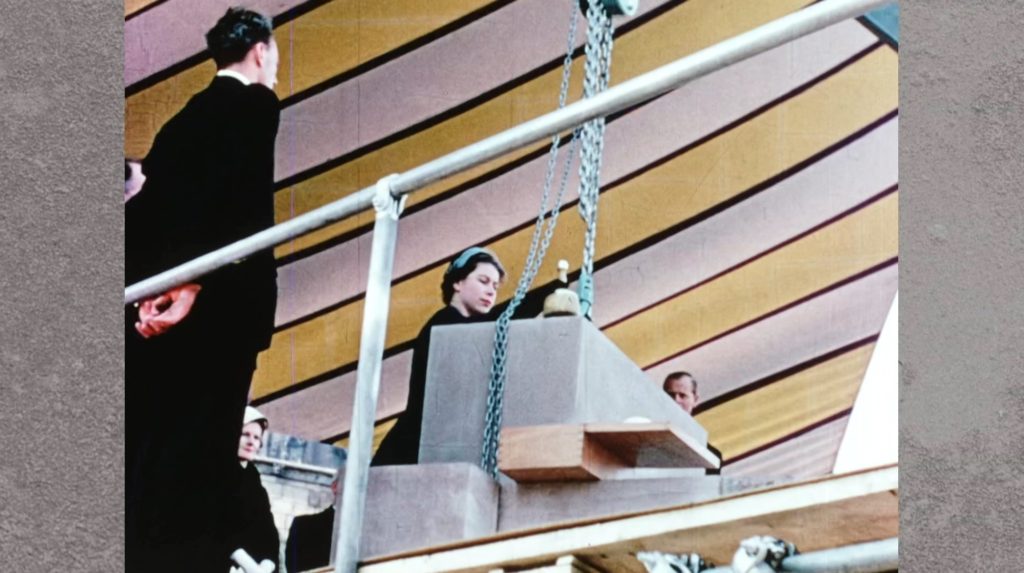
John Wyver writes: Ahead of tomorrow night’s broadcast (9pm, BBCFour), here’s the fifth post in a series about our new documentary Coventry Cathedral: Building for a New Britain. The first four are here, here, here and here. Like the others, this comes with the recognition that you may prefer to save up these posts until after transmission.
Tomorrow, Wednesday 9 June, from 7-9pm, and then after the broadcast finishes at 10.15pm, both I (@Illuminations) and our consultant Helen Wheatley, Professor of Film and Television Studies, University of Warwick (@hmwheatley) will be on Twitter to answer questions and hear your thoughts. I’m hoping that our wonderful graphic designer Ian Cross (@crossfaq) and equally wonderful DoP/editor Todd Macdonald (@toddmacdfilm) will be around for at last some of the time as well. We’re going to use the hashtag #CoventryCathedralBBCFour. Plus, I’ll do a post here tomorrow for similar exchanges. We really do want to know what you think.
read more »
5th June 2021
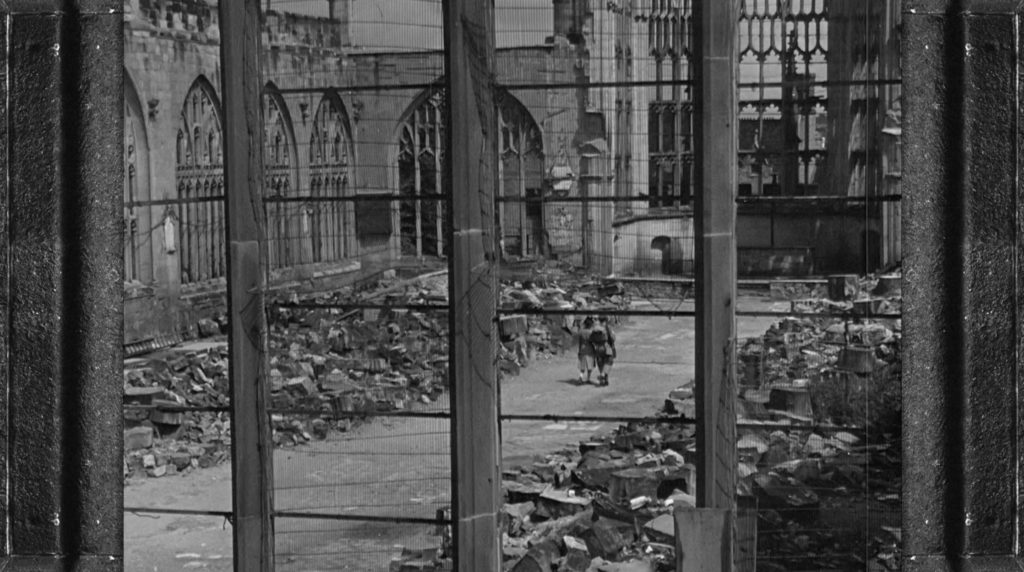
John Wyver writes: Since my third post in this series about our forthcoming film Coventry Cathedral: Building fo a New Britain (the first two are here and here) I have been thinking about the eccentricity of writing moderately detailed commentaries to a film that people can’t yet see. Although it’s hardly appropriate to apply the idea of ‘spoilers’ to these notes, I recognise that people may think it inappropriate for me to determine responses ahead of a viewing. So perhaps the best thing to do is to save up these posts until after transmission (9pm, next Wednesday, 9 June, BBC Four). But indulge me publishing them now, please, since that feels for me the best way to get them written.
This post reflects on the archive in what I think of as the second and third ‘chapters’ in the film, following on from an introduction and then the first that details the night of the bombing of Coventry on 14 November 1940. The next chapter looks at the reconstruction of Coventry immediately after the war, and the one that follows outlines the debate about how the old cathedral should be rebuilt, the competition to select an architect, and the choice of Basil Spence.
One change from the previous posts is that I now have access to a better-quality version from which to take screengrabs – and eventually I’ll return to the previous posts to replace the low res ones there. Also, I intend to add notes about further reading to those earlier posts, and to these as I go along.
read more »
2nd June 2021
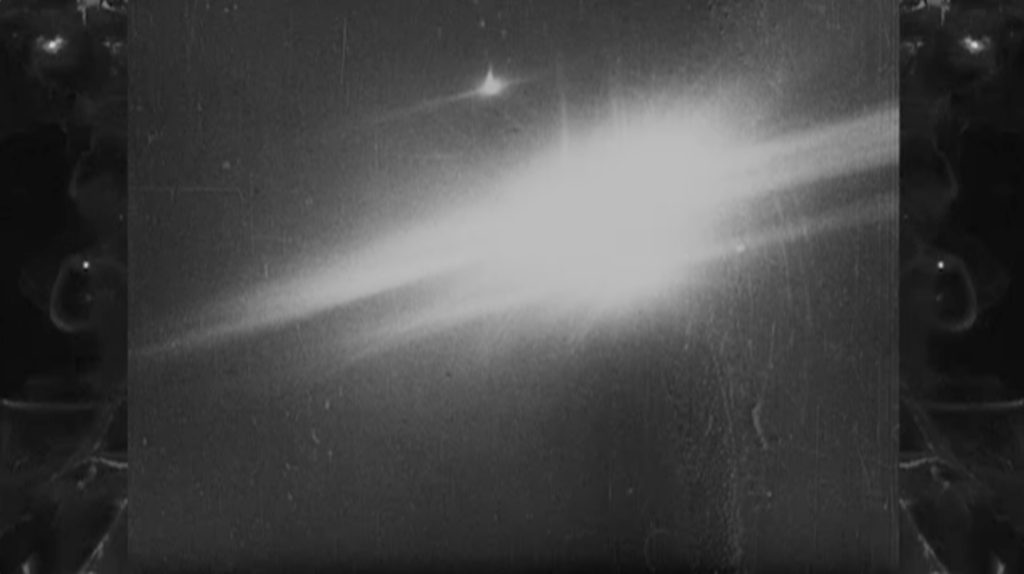
John Wyver writes: As the headline indicates, this is the third post in a series about our new film Coventry Cathedral: Building for a New Britain. Following an introduction and a discussion of the opening sequence, today I reflect on the documentary’s second ‘chapter’ and of the archive featured in it. As I acknowledged yesterday, since you can’t yet access the film these posts may be frustrating and/or simply like inappropriate ‘spoilers’, and if you find them so, do please return after the documentary is first broadcast on Wednesday 9 June on BBC Four.
read more »









